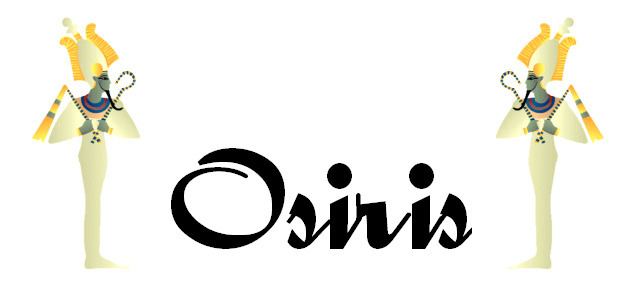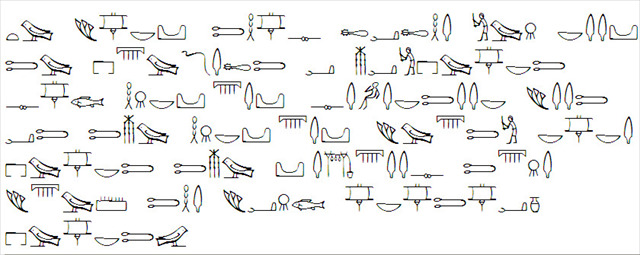
The coordinates are not real. They are the coordinates for the end of the Saratoga airport’s Runway. DO NOT LOOK FOR THE CACHE HERE!
My friend/co-worker of some 16 years first suggested hieroglyphics for use in a cache and that is where the craze started. Blame him, blame Doobie, the man nick-named as such since his real name is “Michael McDonald”, famed singer of the Doobie Brothers.
To do this cache, you will first have to decode the text written in Egyptian Hieroglyphics. Do not fret, I will even give you a site that will help you. It is simple substitution after that. This is the seventh cache made like this, joining Khonshu, Bast, Isis, Wepwawet,Sobek, and Bes. If I complete this cycle then I will have another 18 caches! Yikes! I better get busy!!
To help you out a bit, I will even give you a link to help you decipher what you see below. This cache’s symbols are a bit different that Mark Millmore’s. To help you out this time, I will give you the alphabet that I used to help decipher the text. For more information about Mark Millmore and his book, hieroglyphics, etc. you can go to: Hieroglyphs
Osiris
(Usire)
Egyptian god of the underworld and of vegetation. Son of Nut and Geb. His birthplace was said to be Rosetau in the necropolis west of Memphis. Brother of Nephthys and Seth, and the brother and husband of Isis. Isis gave birth to Horus after his death, having impregnated herself with semen from his corpse. Osiris was depicted in human form wrapped up as a mummy, holding the crook and flail. He was often depicted with green skin, alluding to his role as a god of vegetation. He wore a crown known as the 'atef', composed of the tall conical white crown of Upper Egypt with red plumes on each side. Osiris had many cult centers, but the most important were at Abydos (Ibdju) in Upper Egypt, where the god's legend was reenacted in an annual festival, and at Busiris (Djedu) in the Nile delta. One of the so-called "dying gods", he was the focus of a famous legend in which he was killed by the rival god Seth. At a banquet of the gods, Seth fooled Osiris into stepping into a coffin, which he promptly slammed shut and cast into the Nile. The coffin was born by the Nile to the delta town of Byblos, where it became enclosed in a tamarisk tree. Isis, the wife of Osiris, discovered the coffin and brought it back. (The story to this point is attested only by the Greek writer Plutarch, although Seth was identified as his murderer as early as the Pyramid era of the Old Kingdom.)
Seth took advantage of Isis's temporary absence on one occasion, cut the body to pieces, and cast them into the Nile. (In the Egyptian texts this incident alone accounts for the murder of Osiris.) Isis searched the land for the body parts of Osiris, and was eventually able to piece together his body, whole save for the penis, which had been swallowed by a crocodile (according to Plutarch) or a fish (according to Egyptian texts). In some Egyptian texts, the penis is buried at Memphis. Isis replaced the penis with a reasonable facsimile, and she was often portrayed in the form of a kite being impregnated by the ithyphallic corpse of Osiris. In some Egyptian texts, the scattering of the body parts is likened to the scattering of grain in the fields, a reference to Osiris's role as a vegetation god. 'Osiris gardens' - wood-framed barley seedbeds in the shape of the god, were sometimes placed in tombs - and the plants which sprouted from these beds symbolized the resurrection of life after death.
It was this legend that accounted for Osiris's role as a god of the dead and ruler of the Egyptian underworld. He was associated with funerary rituals, at first only with those of the Egyptian monarch, later with those of the populace in general. The pharaoh was believed to become Osiris after his death. Although he was regarded as a guarantor of continued existence in the afterlife, Osiris also had a darker, demonic aspect associated with the physiological processes of death and decay, and reflecting the fear Egyptians had of death in spite of their belief in an afterlife. Osiris was also a judge of the dead, referred to as the 'lord of Maat' (i.e. of divine law). Legendary ruler of predynastic Egypt and god of the underworld. Osiris symbolized the creative forces of nature and the imperishability of life. Called the great benefactor of humanity, he brought to the people knowledge of agriculture and civilization. The worship of Osiris, one of the great cults of ancient Egypt, gradually spread throughout the Mediterranean world and, with that of Isis and Horus, was especially vital during the Roman Empire.
Taken from ~ http://socsci.colorado.edu/LAB/GODS/ (link no longer valid) ~
Here is your information to decipher:

Try these other hieroglyphic caches:
You can check your answers for this puzzle on Geochecker.com.
Disclaimer: You, and all members of your party must read and agree to the www.geocaching.com disclaimer. In addition, you all must agree to hold the cache owner, www.geocaching.com, and the land owners harmless from any and all causes for action. You and all other members of your party must individually and collectively determine your/their physical fitness and outdoors/hiking skill levels, decide whether or not to visit the various cache locations, and whether or not it is safe and prudent to do so under the conditions that will be encountered. Cache seekers assume all risks involved in seeking these cache locations.